A remarkable number of flowers start with the letter B, so although I have included many of them in this article, I apologize if I missed a few! From lovely native wildflowers to stunning tropical blooms, here is a list of 20 beautiful flowers that start with B, organized by annuals and perennials for your convenience.
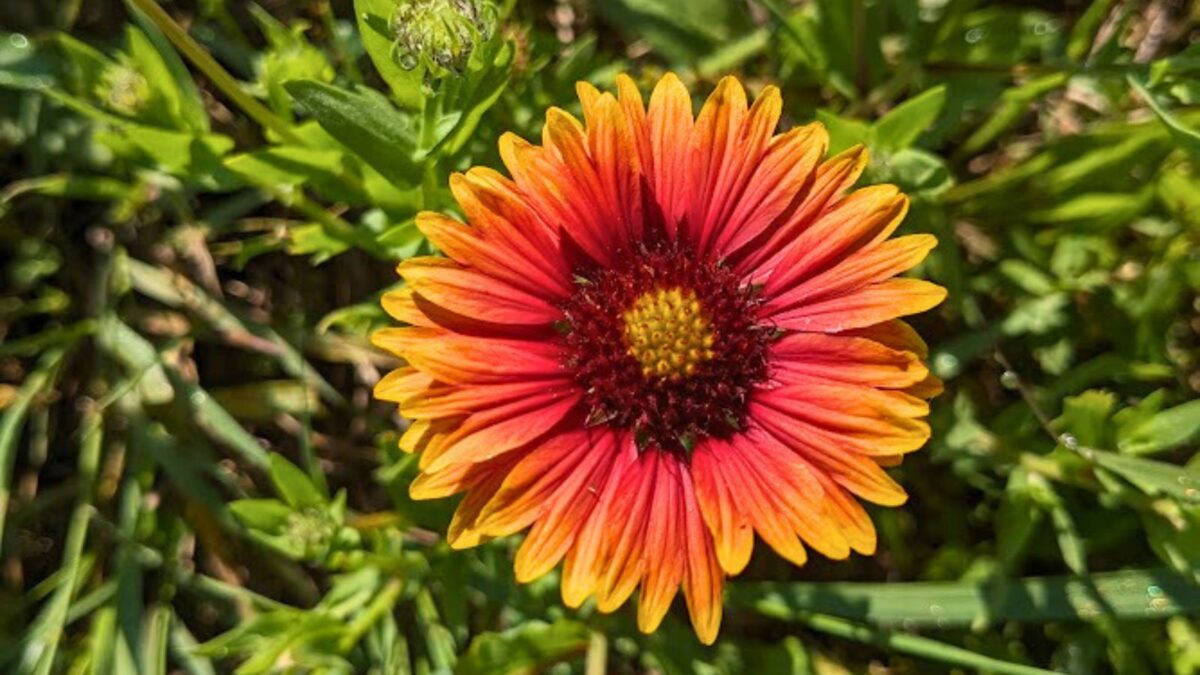
Annual Flowers that Start with B
1. Baby blue eyes (Nemophila menziesii)

Native to Baja, California, these low-growing plants put on spectacular displays of tiny blue or white flowers. In moderate climates, they will begin blooming in late winter and continue through late spring or early summer, providing some of the first color after the snow melts.
Baby blue eyes prefer full sun to partial shade and sandy, gritty soil. An important coastal prairie flower, they attract pollinators like butterflies and bees.
2. Bachelor’s button (Centaurea cyanus)

Also called cornflower, this member of the Asteraceae family commonly has blue flowers, though some varieties exhibit pink, purple, white, red, or even bicolor combinations. It blooms from late spring until the first frost and reaches a height of about three feet.
Though an annual, Bachelor’s button will self-seed (more self seeding plants). It prefers full sun and requires little supplemental water.
This European wildflower has been classified as invasive in several states, so check with your local extension agency before planting bachelor’s button, and consider keeping it in a well-contained area regardless.
Amazon has bachelor’s button seeds for assorted flowers. GORGEOUS!
3. Begonia (Begonia sp.)

This popular, low-maintenance flower grows well in a variety of conditions, from full shade to full sun and both in the ground and in containers — some varieties even make excellent houseplants.
Begonias have unique, attractive foliage in addition to white, pink, orange, red, or yellow flowers that bloom from summer to fall. Plant in well-draining soil after all danger of frost has passed.
4. Bells of Ireland (Moluccella laevis)

The characteristic feature of bells of Ireland is not actually their flowers but the tall spikes of green, bell-shaped calyces that nearly engulf the tiny white flowers nestled at their centers.
Native to the eastern Mediterranean region (despite their name), they prefer dry conditions, cool summers, and full sun to partial shade. In ideal conditions, the plants will readily reseed.
5. Blanket flower (Gaillardia pulchella)
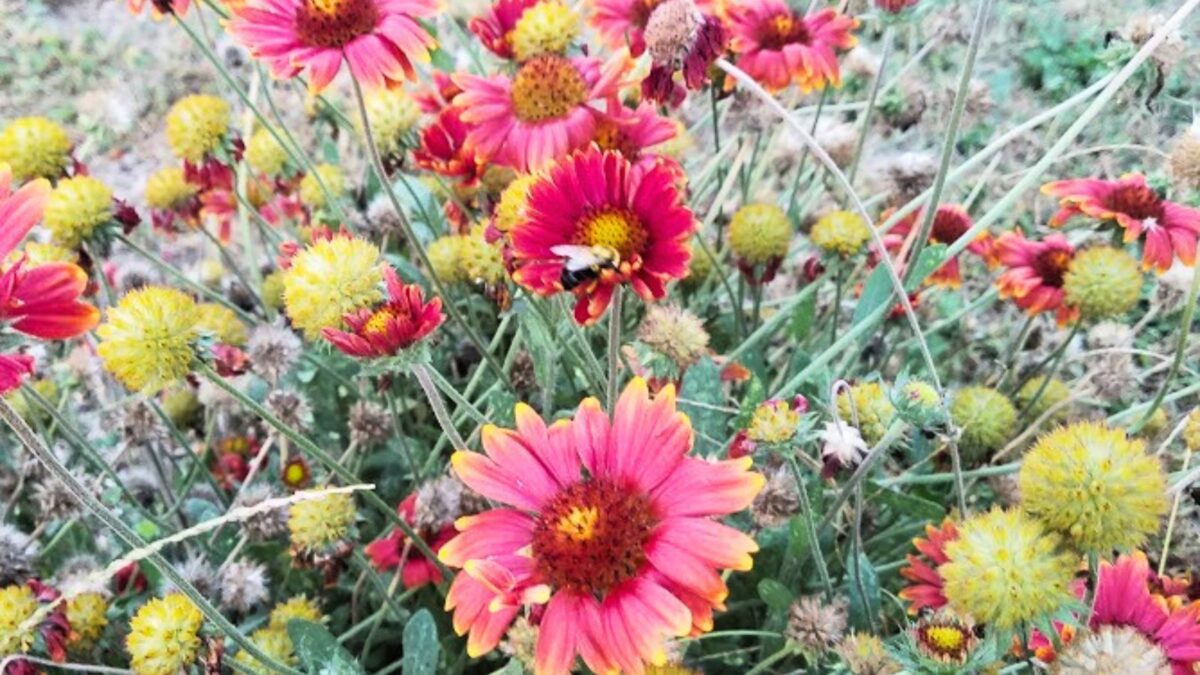
A native wildflower in the Asteraceae family, the blanket flower produces hairy, daisy-like, red and yellow blossoms with dark red centers. It thrives in full sun and dry summer heat and will tolerate poor, dry soil.
Typically growing 12 to 18 inches, the upright stems occasionally reach two feet high. The flowers bloom from late spring through fall and w0rk especially well in rock gardens, cottage gardens, and meadows.
In optimum conditions, blanket flowers will reseed; other species of Gaillardia are perennials.
6. Blue lace flower (Trachymene coerulea)
Native to Australia, this low-maintenance, eye-catching flower works well in sunny borders and cutting gardens. A little afternoon shade is appreciated in hot, sunny climates.
Each slender stalk produces a globe of tiny, star-shaped flowers in shades of blue or purple, and these sweetly scented flowers bloom from late summer until the first frost. They typically reach 24 to 30 inches high at maturity.
7. Blue Marguerite daisy (Felicea amelloides)

True to its name, the blue Marguerite daisy produces stunning flowers with cheerful blue petals and a bright yellow center. It grows best in dry, mild summers, making it the perfect addition to Northeast and Pacific Northwest gardens.
However, in warmer areas with frost-free winters, it will grow as a shrubby perennial. Although it needs at least six hours of direct sunlight per day, blue Marguerite will do best with some afternoon shade in hotter regions.
8. Borage (Borago officinalis)
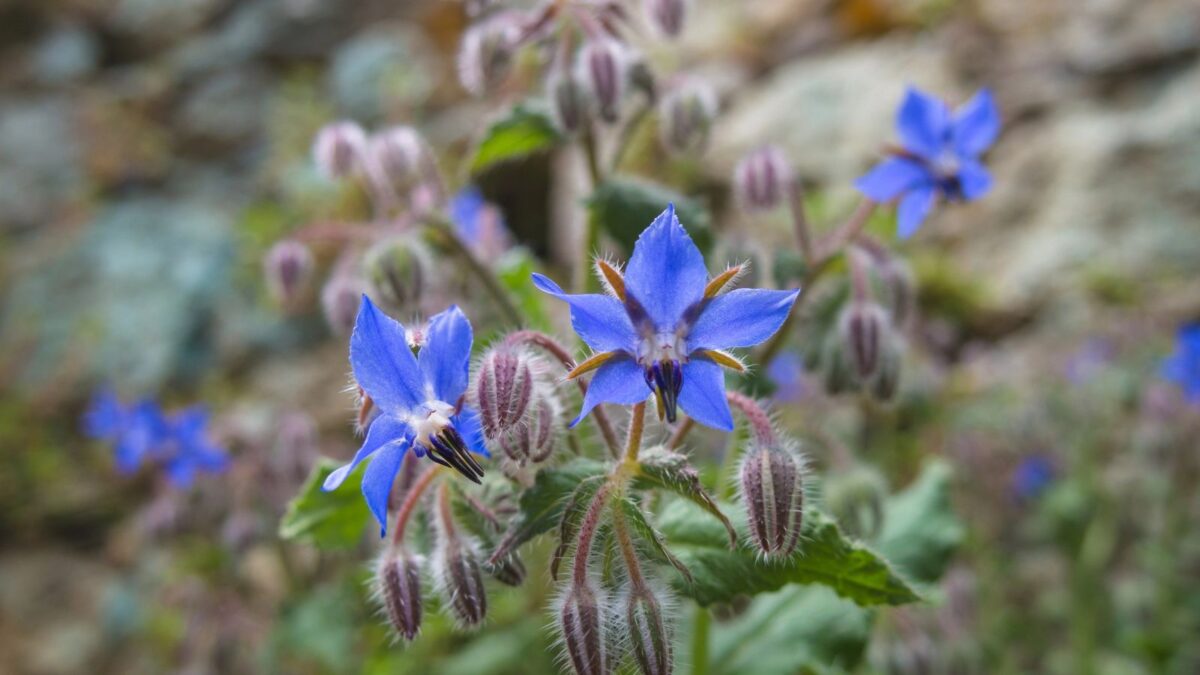
Also known as starflower, this Mediterranean herb displays spidery, star-shaped flowers in shades of blue and purple, with some varieties in white or pink. It grows two to three feet tall with hairy stems and leaves that add a unique texture to flower beds.
Although borage may not look appetizing with all those bristles, its cucumber-flavored leaves can be used in tea, and the flowers make an attractive topping for salads and cakes.
9. Bush violet (Browallia speciosa)

This shrubby, South American nightshade blooms around June through September with tubular purple flowers that have white centers. Bush violets grow to about two feet tall and work well in hanging baskets or other containers, borders, and woodland gardens.
They prefer moist, well-draining soils and full sun to part shade; afternoon shade is best in hot summers.
In USDA zones 9-10, bush violets can be grown as a perennial. In cooler zones, they may be brought inside as houseplants during the winter.
Perennial Flowers that Start with B
10. Baby’s breath (Gypsophila paniculata)

Although perhaps most commonly known as a bouquet filler, baby’s breath forms light, airy clouds of tiny, delicate blossoms for a beautiful display in any flower garden. It’s available in both annual and perennial varieties, as well as shades of pink. The plants prefer well-draining, alkaline soil, and full sun.
Unfortunately, baby’s breath is considered a noxious weed in some parts of North America, so check with your local extension office before planting it.
11. Bee balm (Monarda sp.)
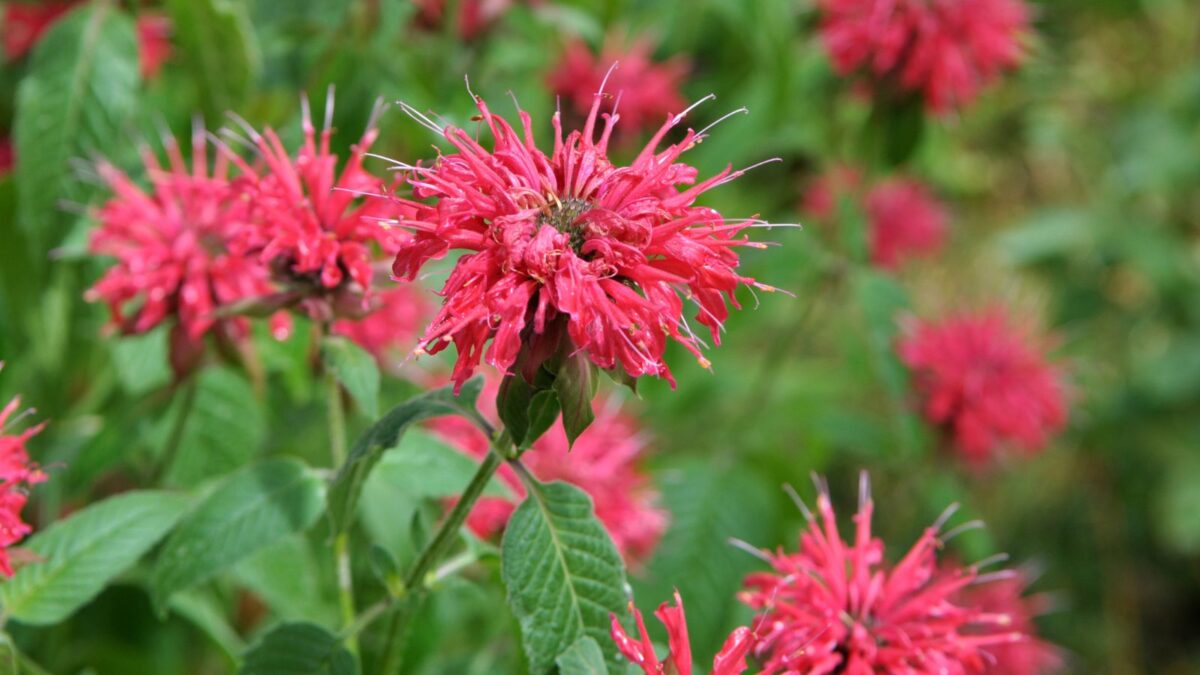
This native wildflower ranges in color from warm red to cool lavender and attracts hummingbirds and butterflies in addition to bees. The unique heads of tubular flowers typically bloom from early summer into the fall, especially when deadheaded.
Plant in well-drained soil in full sun, and keep the soil moist but never wet, as bee balm is susceptible to powdery mildew and rot.
Also called bergamot, bee balm should not be confused with the citrus used to flavor Earl Grey tea, though both its leaves and flowers can be brewed to make an aromatic herbal tea.
12. Bellflower (Campanula sp.)
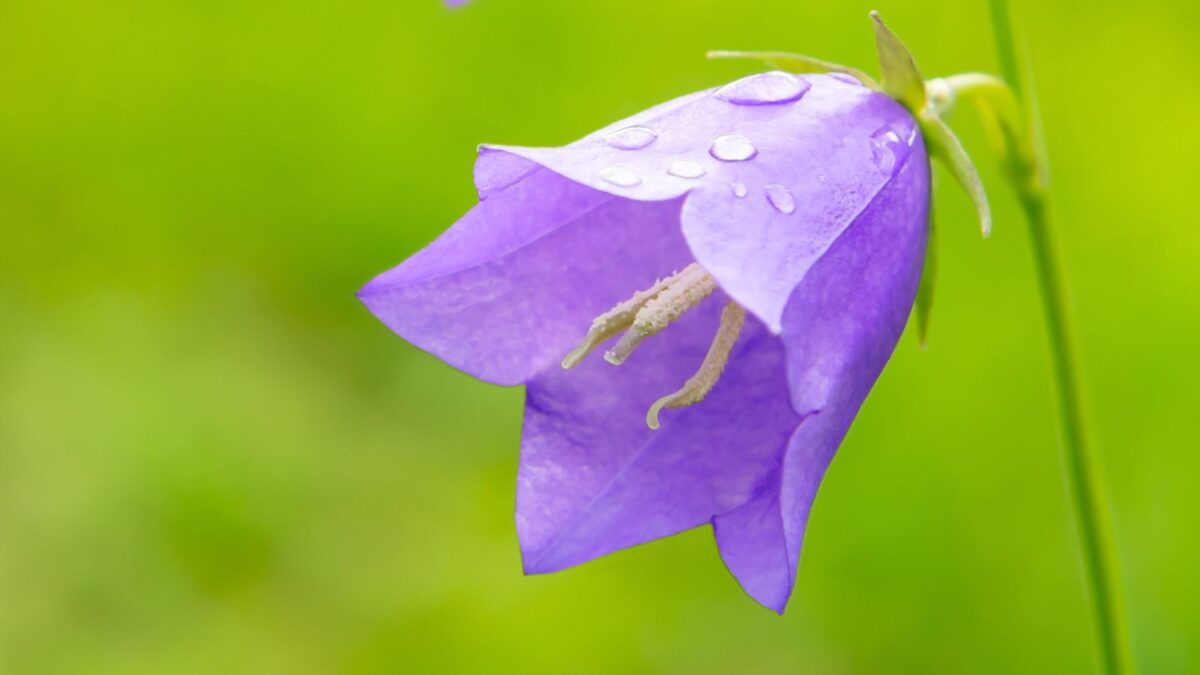
The genus Campanula actually comprises more than 300 annual, biennial, and perennial species, with most falling into the latter category. All have upturned, cup-shaped flowers most often in lavender or blue but sometimes in pink or white. Although they may start earlier or continue until frost, most varieties bloom heaviest in June and July.
These cold-hardy plants prefer full sun and well-draining soil with moderate moisture, though they will tolerate periods of drought. Although many varieties are native, some can become invasive and should have the seed heads removed to prevent spreading.
Check out these other bell-shaped flowers.
13. Bird of paradise (Strelitzia sp.)
A tropical evergreen plant, bird of paradise has waxy, gray-green leaves resembling those of a banana plant and unique, stunning flowers that look something like a bird’s head or even a bird in flight.
Plants grown in full sun will produce more flowers on shorter stems, while those in shade will have larger blooms on taller stalks.
Unfortunately, bird of paradise will only grow outdoors in zones 9-12, though it also makes a lovely houseplant in cooler areas.
14. Black-eyed Susan (Rudbeckia hirta)
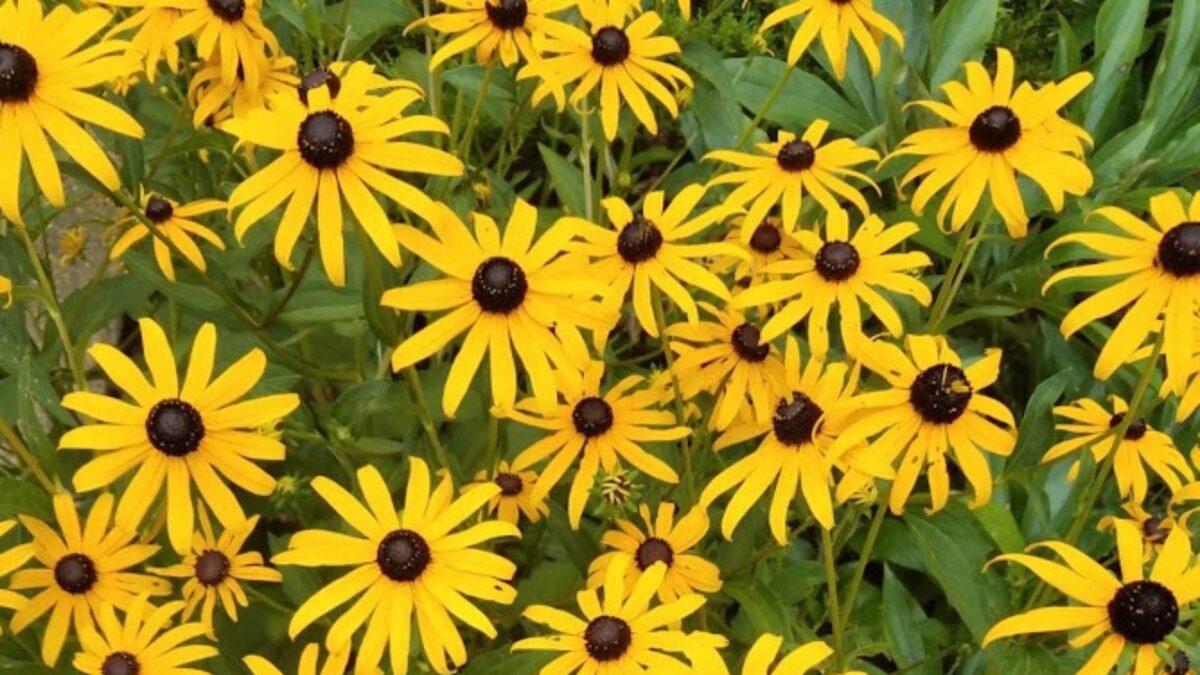
These sunny yellow wildflowers grow well in a variety of soils and in full sun to light shade.
They attract pollinators as well as deer, rabbits, and other wildlife, so if you don’t want to encourage these animals to visit your garden, plant lavender, rosemary, or other fragrant, repelling plants near black-eyed Susans. The cheerful, low-maintenance flowers bloom from late spring through summer.
15. Blazing star (Liatris sp.)
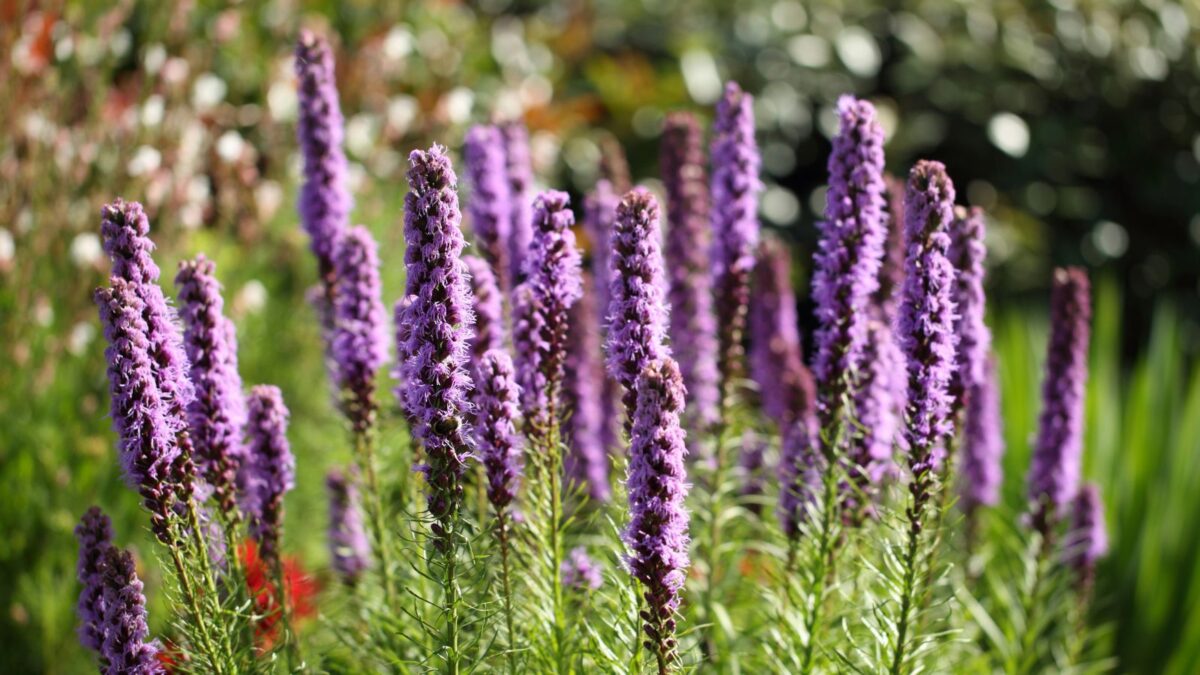
The tall spikes of pink, purple, or white blazing star flowers bloom from the top down, similar to the burning habit of sparklers. While the bright, nectar-filled blossoms attract butterflies and other pollinators, finches enjoy munching on the seeds that follow.
These prairie natives are easy to grow, requiring full sun but tolerant of poor soils and drought.
16. Bleeding heart (Dicentra sp.)
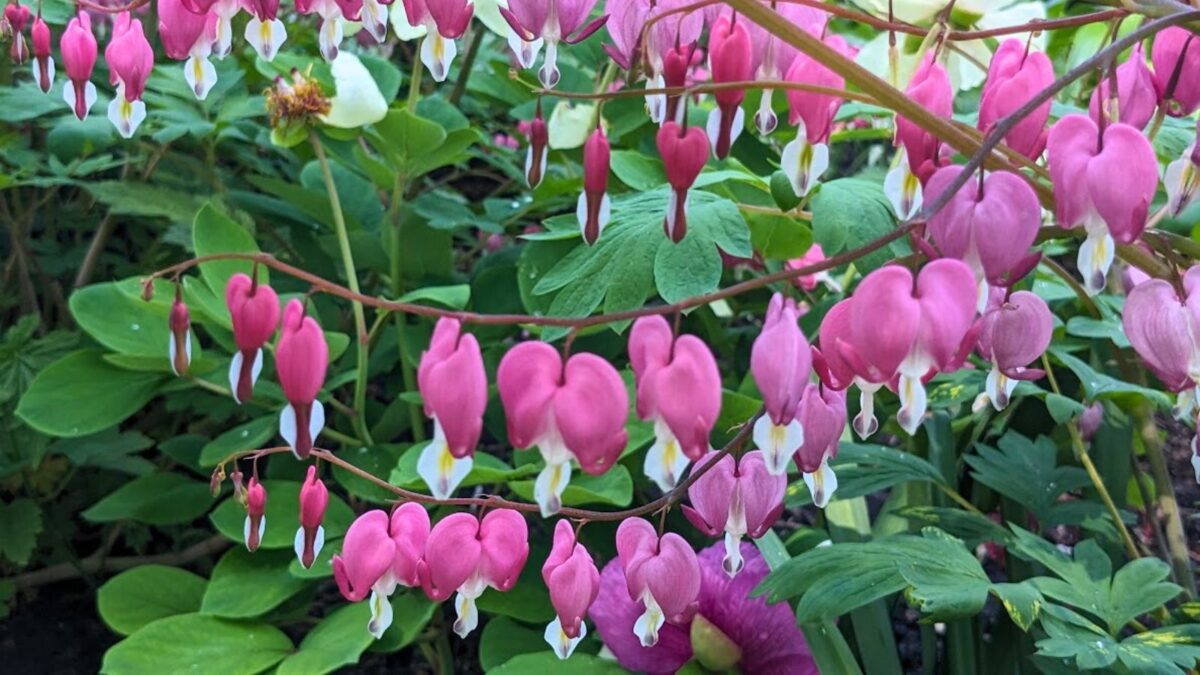
Bleeding heart gets its name from unique, heart-shaped flowers dripping down from arching stems. While D. spectabilis is the classic old-fashioned species, others have variants of the heart shape, such as the eastern U.S. native fringed bleeding heart or aptly named Dutchman’s breeches. For those on the Pacific coast, there is also a western bleeding heart that resembles the small, fine fringed species.
As woodland perennials, all bleeding hearts prefer part to full shade, cooler temperatures, and regular watering.
Learn more about bleeding heart plant care.
17. Buckbean (Menyanthes trifoliata)
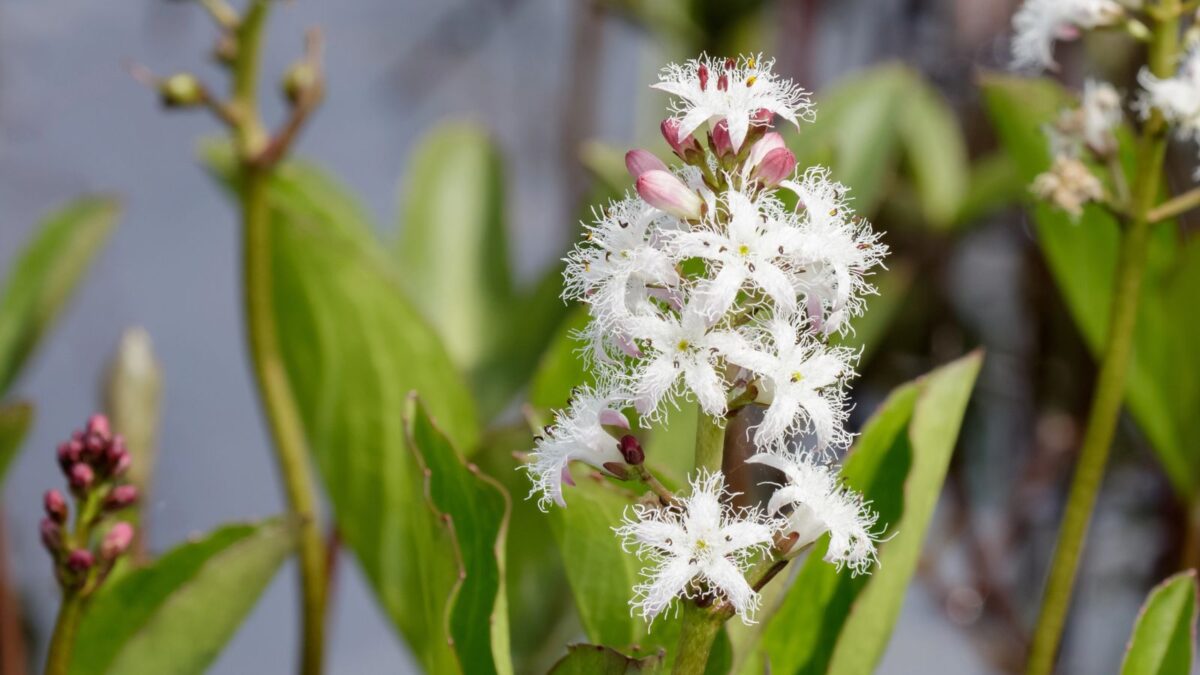
Also appropriately called bogbean, this native wildflower typically grows in bogs, marshes, moist woodland soil, and near ponds. Clusters of frilly, star-like, white flowers bloom only briefly in the spring or summer, though they are perfect for areas too wet for other plants.
Plant buckbean in a consistently wet location that receives full sun to part shade. The outer edge or shallow end of a water garden is perfect.
18. Bugloss (Echium vulgare)
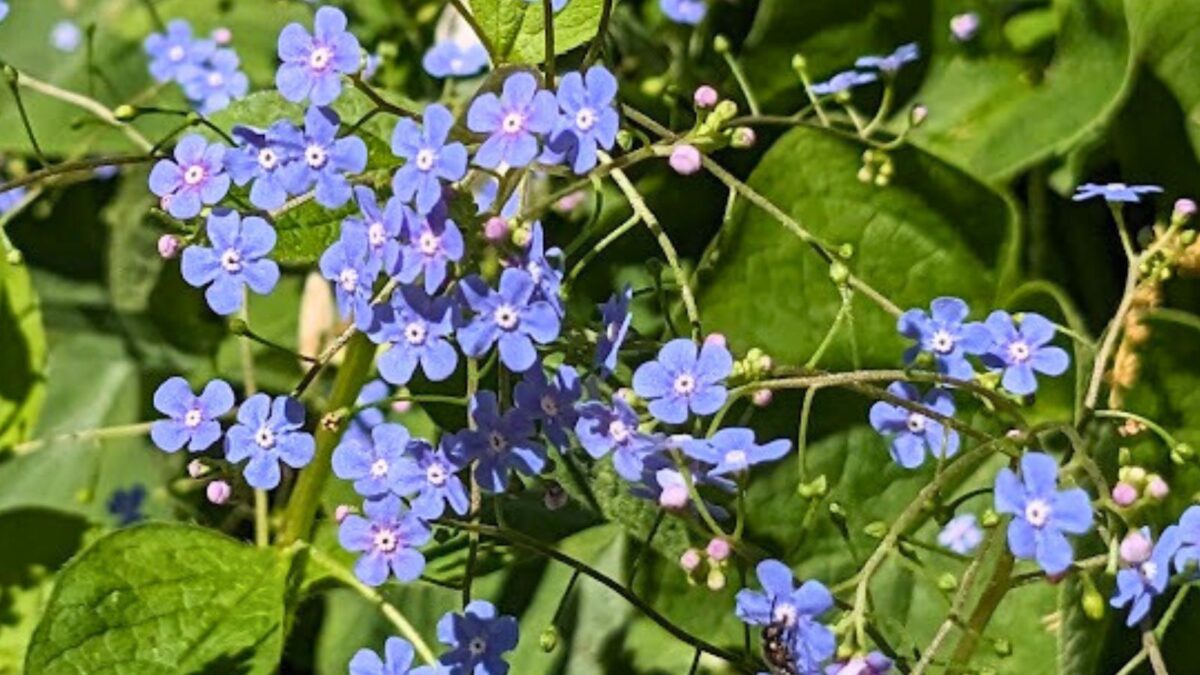
This low-maintenance wildflower thrives in full sun and well-drained soil. Also called viper’s bugloss, it grows up to three feet tall with spikes of blue or pink flowers, often with contrasting stamens, that attract pollinators.
Deadhead regularly to encourage continued blooming and prevent reseeding, as bugloss can become invasive in many areas. Check with your local extension office before planting.
Whew, that’s quite the list! I hope you’ve discovered a few new beautiful flowers that start with B to add to your garden for bountiful blooms.
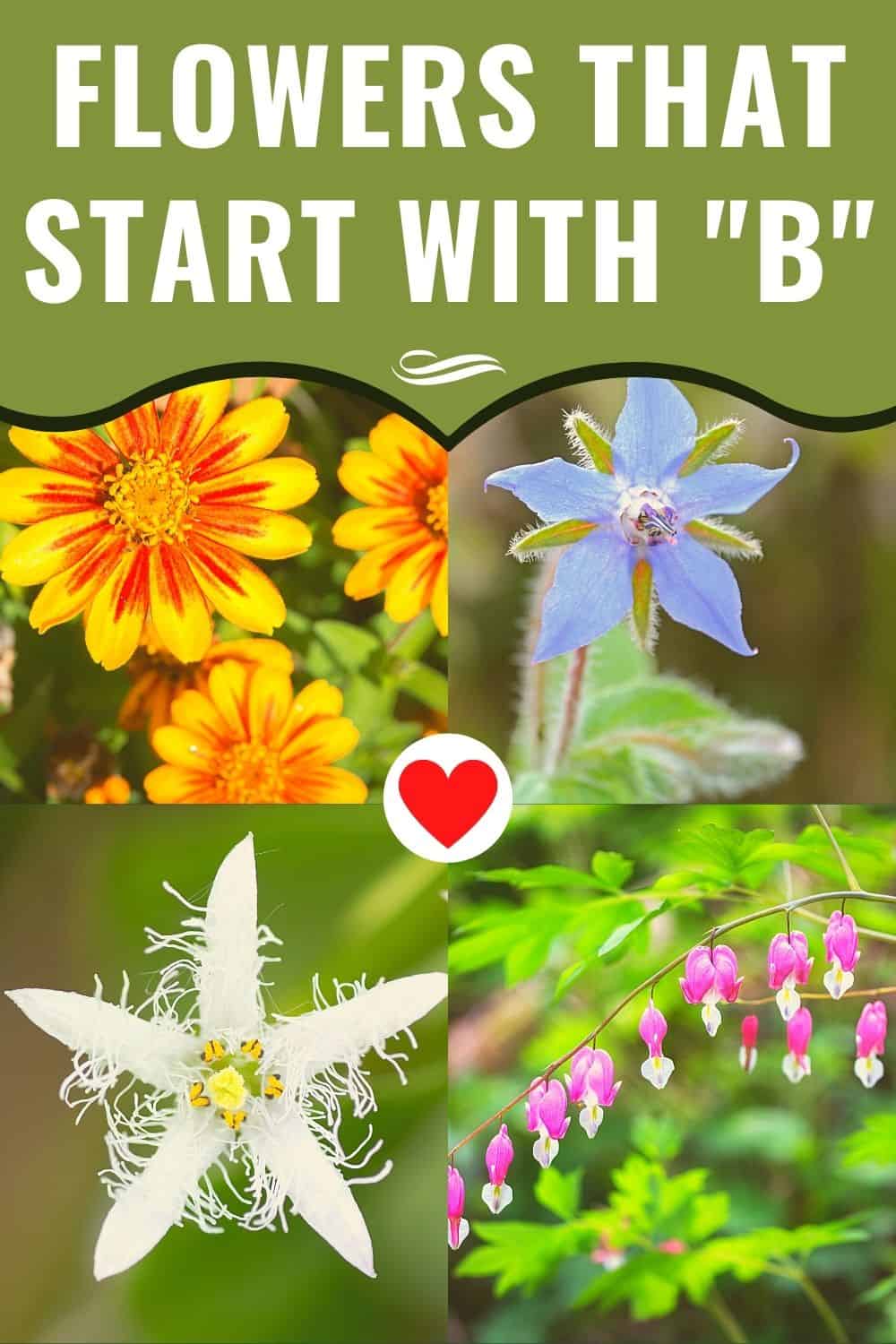

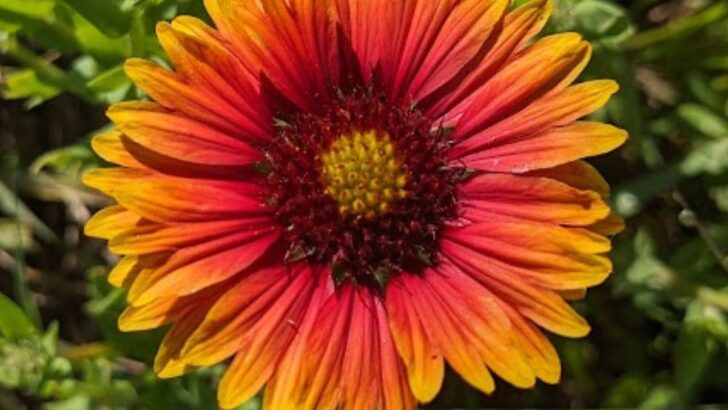
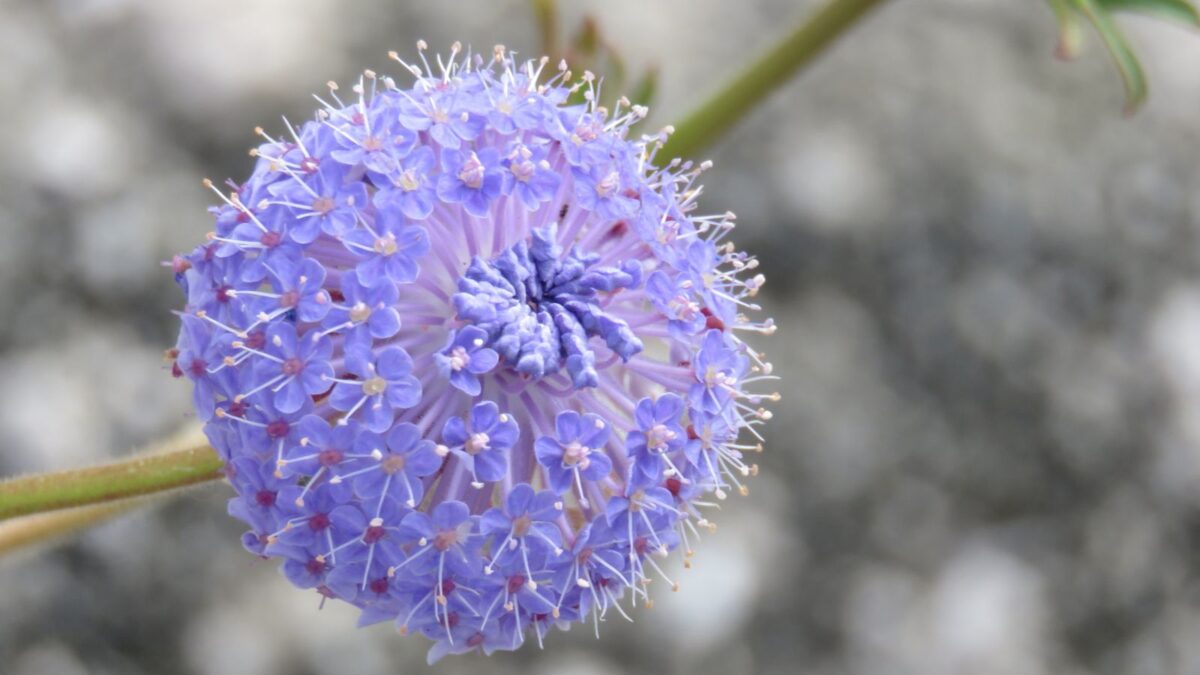
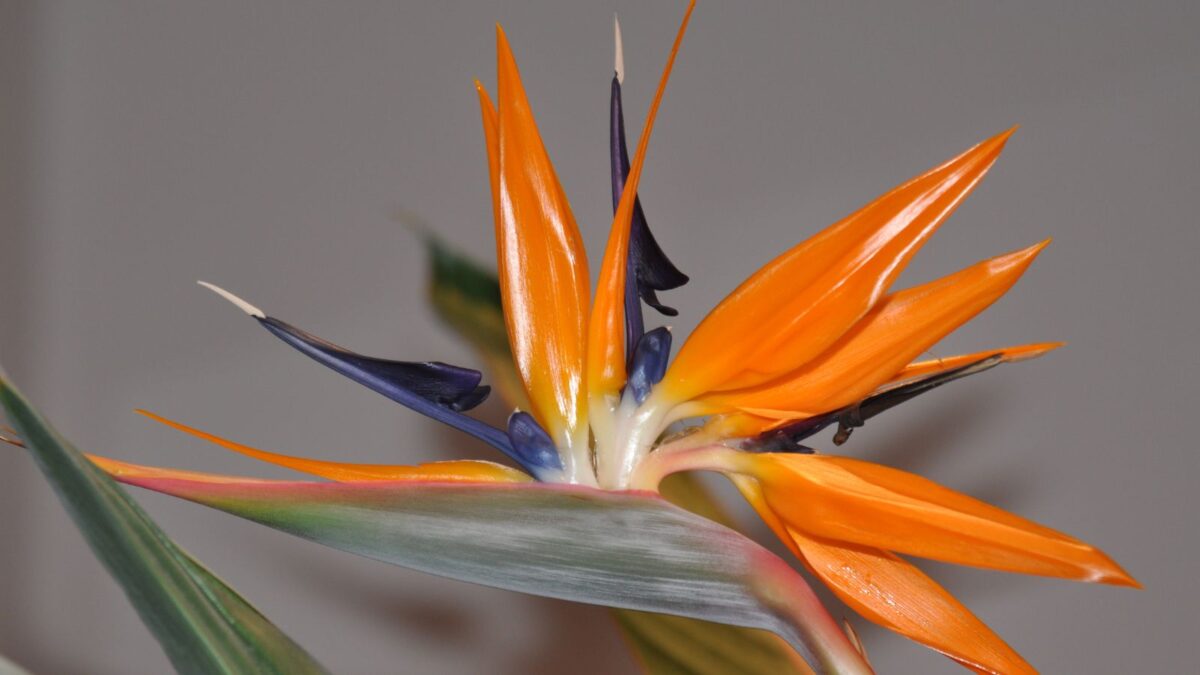

Beautiful Flower Garden Ideas
Monday 15th of March 2021
[…] 18 Beautiful Flowers that Start with B […]